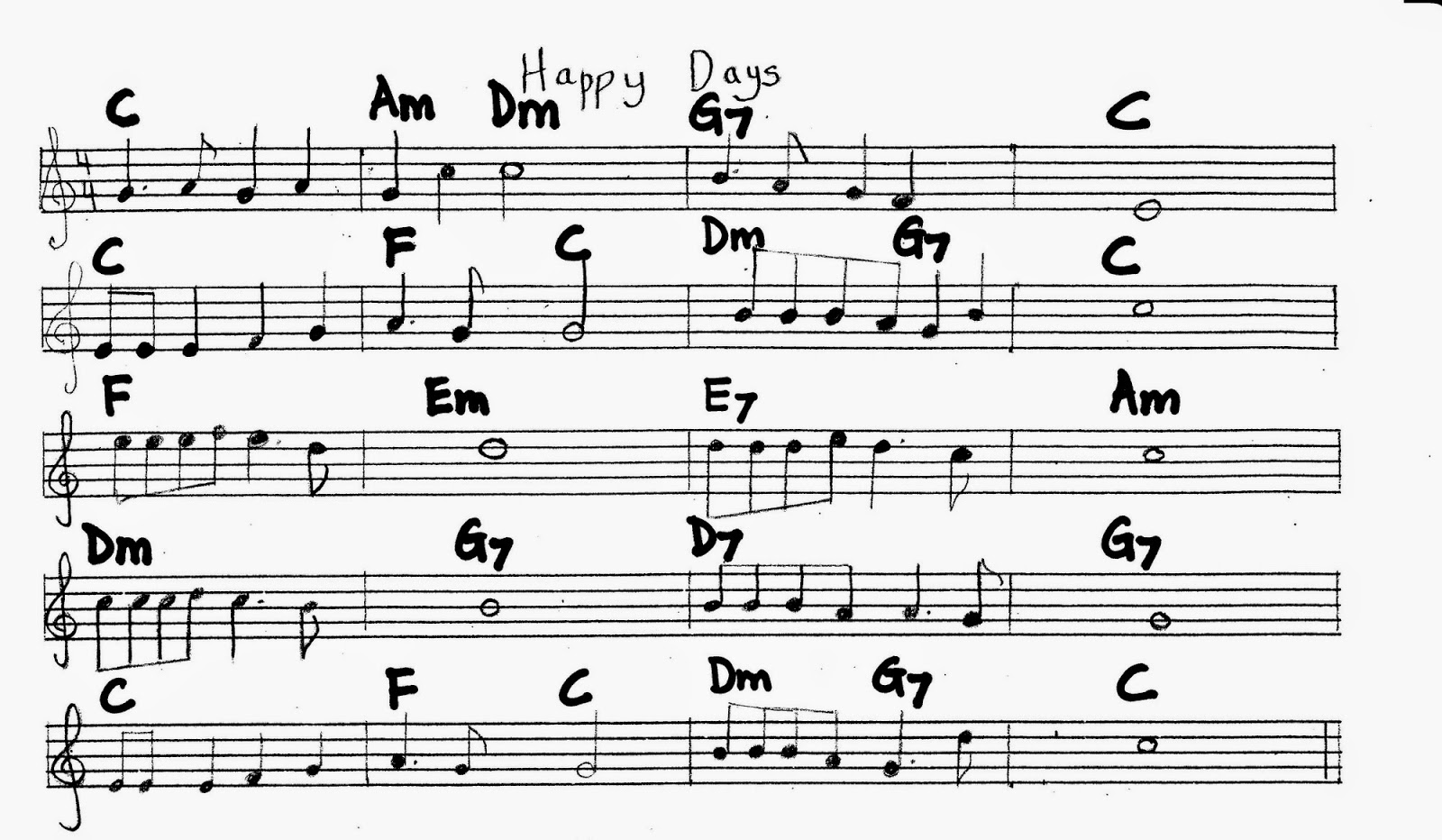Chords support a melody and does make a song sound good. Quite many old songs are being re-released over the years and to cater to the listener today, those songs have gone through a revamp. The groove is more current and some of those songs go through some re-harmonization. This 'big' word simply means that some of the original chords of the song has been changed and substituted with other chords.
The music appreciation of the listener evolves and progresses through time. Pop songs around the 50's and 60's consist of three basic chords that we refer to as the primary chords. They are Chord I, IV and V7. These chords are most evident in Rock and Roll songs of that era. Nowadays, songs contain more chords to make it sound a lot more interesting.
I shall take a recent composition submitted by a student to illustrate the use of chords and how chords can make the same piece of music sound interesting. The piece (see below) was composed without chords. The story behind the title was that the student was feeling really happy when he composed this piece of music. Thus, the title reflected his mood at that moment when he wrote this piece.
For my first illustration of chord use, I am staying with the use of primary chords only. This piece is written in the key of C Major, therefore the primary chords will be C, F and G7. I am not using Chord V in its most primary form but as a Dominant 7th chord, as shown below.
There are many different chords that are suitable to be used and what I did was simply to change the C chord at Bar 13 to F chord (circled below). Play the above piece at the piano and then the one below to feel the difference in that bar. Both chords sound suitable but it is always a matter of preference for the individual in deciding which chord sounds best.
Taking it another step further, I am using more chords to make the piece sound more interesting. In the example below, I am using chords diatonic to the key of C Major to add to the melody. Play the piece below on the piano and notice the difference as compared to the above. I am sure you will find the use of more chords below more interesting to your ears.
Finally, just to make you aware that more can be done to the harmony (chords) for this piece, I use chords that are not diatonic to the key of C Major. The chords E7 (at bar 11) and D7 (at bar 15) do not belong to the key of C Major but I can use them to great effect for this piece of music. Also, notice that in bars 2, 7 and 19, I use two chords in each bar to add more harmony to the melody. Again, play it on the piano to hear and feel the difference.
Of course, these are just some possibilities of chords that can be used in the same piece of music. There are other possibilities depending on your level of music appreciation and musical knowledge to change the chords around or even add other chords to this piece to make it sound different and interesting. The possibilities are plenty.
When we have received all the compositions, it will be uploaded with arrangements for all to play and recordings for all to hear.






